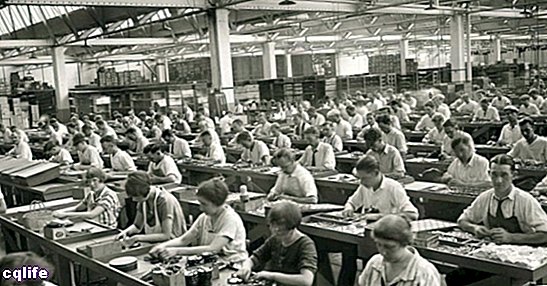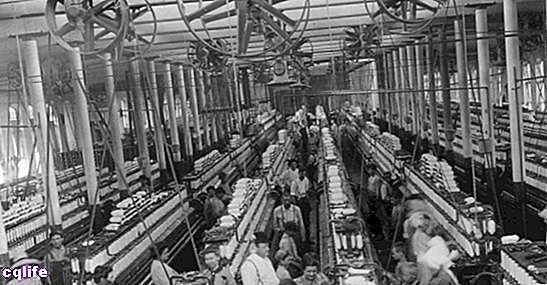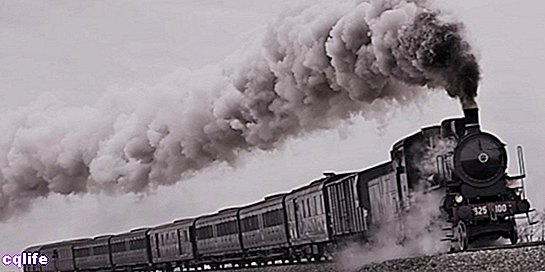- What is the Industrial Revolution?
- Causes of the Industrial Revolution
- Consequences of the Industrial Revolution
- Inventions of the Industrial Revolution
- Second Industrial Revolution
We explain what the Industrial Revolution was and why it was so important. Causes, consequences, and inventions that he left us.

What is the Industrial Revolution?
It is known as the Industrial Revolution to a time of deep and radical transformations in the economic, social and technological that began in the Europe of the 18th century, specifically in the Kingdom of Great Britain, and which spread throughout Europe and the United States, ending in the mid-19th and early 20th centuries.
The changes that took place at this time were so radical that they can only be compared with those experienced by the humanity in the Neolithic, and can be summarized in the abandonment of an agrarian model of Commerce, work and society, in pursuit of an urban, mechanized and industrialized one.
The cornerstone of this revolution was the technology, specifically the appearance of the railway and later of the electricity, which modernized techniques labor and agriculture based until then on manual labor and beasts of burden, respectively. This impacted on the gross domestic product of the nations and represented a sustained growth of wealth and a permanent change in the mode of life of the great masses as had never been experienced before.
The Industrial Revolution is usually divided into two stages: a First Industrial Revolution, which begins around 1760 with the application of the model of textile factories in a Great Britain ruled by the liberal non-absolutist monarchy; and one Second Industrial Revolution, characterized by an acceleration of the changes produced by the new technology in European society, beginning around 1850 and culminating with the beginning of the First World War in 1914.
Causes of the Industrial Revolution

The antecedents of the Industrial Revolution had to do with the Renaissance of the culture European after Middle Ages and your entrance to the Modern Era, which represented a new assessment of science and knowledge, already free from the yoke of faith, focused rather on human reason (a consequence in turn of the Scientific revolution 17th century).
Another vital trigger was the capitalism, which had already begun to be established thanks to the Bourgeois Revolutions and the abandonment of the Old Regime. Liberal thought, which reigned in the nations of non-absolutist monarchies, hand in hand with the spirit of Protestantism and the need to produce one's own goods consumption, given the decrease in imports caused by the Napoleonic wars and the American Wars of Independence, led to a necessary alliance between farmers and merchants, which would cause a population boom and the availability of new workforce.
Consequences of the Industrial Revolution
The consequences of the Industrial Revolution were tremendous and irreversible in the history of mankind. Among them we can list the following:
- Radical change in the way of life. The improvements in the production and trade systems laid the foundations for the mass production of goods, which meant the emergence of new jobs and the generation of wealth in the masses. This had an impact on the increase in birth rate and life expectancy (demographic explosion), in addition to a notorious rural exodus to the cities.
- New transports. The steam technology, initially, and then the engine of combustion and the electricity, allowed new transportation methods that significantly reduced waiting times for merchandise and allowed human mobility at speeds never suspected.
- Emergence of leftist ideologies. The predominance of bourgeoisie as the owner of the means of production, and his exploitation of the labor force of impoverished industrial workers and peasants, marked the rise of trade unionism, the socialism, the anarchism and the communism.
Inventions of the Industrial Revolution

Some of the most important inventions that took place during the Industrial Revolution were:
- The steam engine. First built in 1768 by James Watt, this machine capable of converting the heat from a coal-fired boiler into force of movement gave rise to trains, ships to steam and other much more powerful and faster production mechanisms.
- The trains. An emblematic and fundamental figure of the Industrial Revolution, the train shortened the transfer times of personnel and merchandise, unified distant towns and forever changed the way we think about distance.
- The bulb. Devised at the beginning of the 19th century, it was perhaps the practical application of electricity that had the greatest impact on European homes.Until then, lighting was produced by burning gas or fuel, and the electric bulb was the possibility of lighting the nights and extending the useful periods of work and life.
- The spinning machine. This device revolutionized textile production, which until then was done manually and by hand, allowing several spinners to work at the same time, maximizing textile production. Shortly after, the first steps were taken in the relative automation of the process.
Second Industrial Revolution
The Second Industrial Revolution occurred between 1850 and 1914, and led to the development of great and revolutionary inventions in transportation (combustion engines, airplanes) and telecommunications (telegraph, telephone, radio). Its impact was even greater than that of the First Industrial Revolution and forever changed working models, education Y coexistence citizen.
Also, it led to a first call globalization, in which the economy it internationalized and expanded its influence over the territories not reached in the previous explosion.
